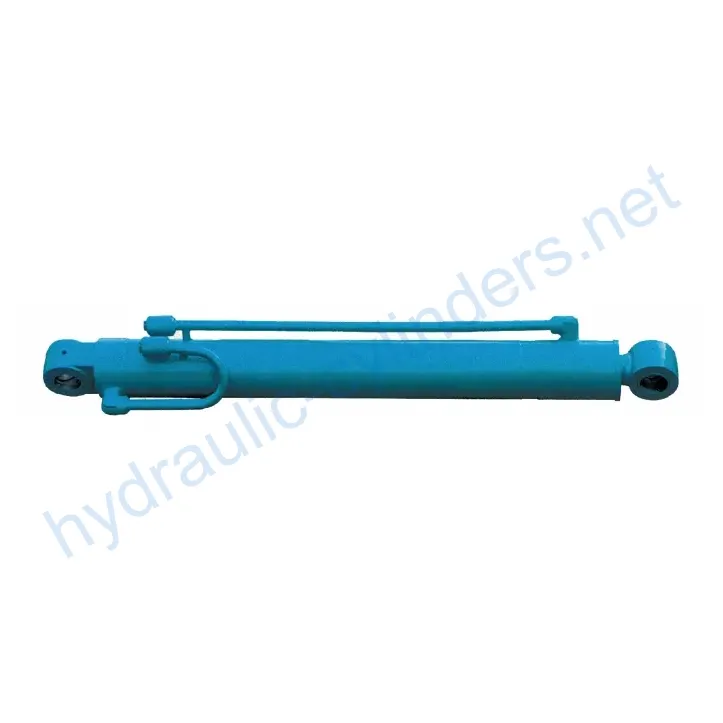Arm Cylinder For Caterpillar Large Excavator E336DZ/D2L
Introduction
The Arm Cylinder for Caterpillar Large Excavator E336DZ/D2L is a specialized hydraulic cylinder designed to provide linear motion and power to the arm of various types of machinery like excavators, cranes, and robotic arms. It plays a crucial role in hydraulic systems, enabling the effective movement and control of additional tools or attachments. These cylinders not only deliver smooth motion but also withstand heavy loads, ensuring efficient operation and reliability in various working conditions.
Features
- High Efficiency Transmission: The Arm Cylinder provides powerful linear motion and force, ensuring high performance in various operations.
- Precision Control: Through the hydraulic system, the Arm Cylinder enables precise motion control, making tool operations more flexible and accurate.
- Durability: Arm Cylinders are typically manufactured using high-strength materials, offering excellent wear and corrosion resistance, suitable for long-term use in harsh environments.
- Multi-function Adaptability: These cylinders find extensive applications in a variety of machinery such as excavators, cranes, and robotic arms, adapting to different work requirements.
- Easy Maintenance: The design considers ease of maintenance and replacement, making regular inspections and servicing convenient and reducing equipment downtime.
Applications
- Construction Engineering: In excavators and cranes, the Arm Cylinder controls the movement of buckets or booms for earthworks, material handling, and structural installation.
- Manufacturing Industry: In automated production lines, the Arm Cylinder facilitates the motion of robotic arms for assembly, welding, and material handling processes, enhancing productivity and precision.
- Agricultural Machinery: In agricultural equipment such as harvesters and seeders, the Arm Cylinder controls the movement of operating arms for tasks like seeding, fertilizing, and harvesting.
- Mining: In mining equipment, the Arm Cylinder controls the arm movement of mining machinery, enabling ore extraction and transportation.
- Logistics and Transportation: In forklifts and handling robots, the Arm Cylinder controls the lifting and movement of forks, facilitating material handling and stacking.
Design Considerations and Selection Criteria
- Bearing Capacity: The Arm Cylinder’s ability to handle heavy loads is a crucial factor in design consideration.
- Sealing: Various sealing components, such as piston seals and rod seals made of wear-resistant materials like polyurethane and nitrile rubber, are used to ensure effective sealing performance.
- Durability: The cylinder body and threaded end surface undergo fine treatment to improve wear resistance.
- Safety: Safety considerations include reliable pressure holding, leakage prevention, and robust construction to ensure safe operation.
- Maintainability: Easy access for inspection and maintenance, as well as the availability of spare parts, are essential factors in the selection process.
Sealing and Lubrication
The Arm Cylinder utilizes various sealing components, such as piston seals and rod seals, made of wear-resistant materials like polyurethane and nitrile rubber. The cylinder body and threaded end surface are finely treated to improve wear resistance. Regular lubrication with suitable hydraulic oil is necessary to ensure smooth operation.
Regular Inspection and Preventive Maintenance
- Inspect the cylinder for any signs of leakage or damage.
- Check the sealing components and replace them if necessary.
- Ensure proper lubrication of the cylinder.
- Tighten any loose bolts or connections.
- Perform a thorough cleaning to remove any dirt or debris.
Installation Guide
1. Prepare the mounting surface and ensure it is clean and free from any debris.
2. Attach the Arm Cylinder to the designated mounting points using appropriate bolts and hardware.
3. Ensure the cylinder is aligned correctly and securely fastened.
4. Connect the hydraulic hoses to the cylinder, ensuring proper sealing.
5. Test the cylinder’s functionality by performing a few cycles to check for any abnormalities.
6. Make any necessary adjustments or fine-tuning to achieve optimal performance.
7. Double-check all connections and ensure everything is secure before operating the machinery.
Safety Considerations and Environmental Factors
When using Arm Cylinders, it is essential to prioritize safety measures to prevent accidents or injuries. Proper training, following safety guidelines, and using personal protective equipment are crucial. Additionally, considering environmental factors like temperature, humidity, and exposure to chemicals is important in ensuring optimal cylinder performance and longevity.
Troubleshooting and Common Issues
1. Issue: Cylinder leakage
Solution: Check the sealing components and replace any damaged seals. Ensure proper tightening of connections.
2. Issue: Inconsistent or jerky movement
Solution: Inspect the hydraulic system for any blockages or contamination. Check the cylinder for internal damage or wear.
3. Issue: Excessive noise during operation
Solution: Inspect the cylinder for loose components or misalignment. Lubricate the moving parts properly.
4. Issue: Cylinder not responding to controls
Solution: Check the hydraulic system for any malfunctions or insufficient fluid levels. Inspect the control valves and connections.
5. Issue: Cylinder overheating
Solution: Ensure proper hydraulic fluid flow and temperature regulation. Check for any blockages or restrictions in the system.
By following these troubleshooting tips and preventive measures, readers can effectively diagnose and resolve issues with their Arm Cylinder, minimizing potential problems.
Remember to organize the article logically, use subheadings for easy navigation, incorporate relevant images or charts for enhanced understanding, and ensure the content is clear, concise, and suitable for readers with varying levels of technical knowledge.
About Us
We are a professional manufacturer of replacement hydraulic cylinders, offering a wide range of products. We have become one of the leading manufacturers and wholesalers in the domestic and international markets. Upholding the principle of excellent quality, we continuously improve our technological capabilities and production efficiency through refined manufacturing processes. With advanced digital manufacturing equipment and professional testing systems, we optimize our manufacturing platform and enhance product quality control procedures, demonstrating strong innovation capabilities. Our goal is to meet diverse customer needs with principles of efficiency, precision, and high quality.
Note: This article has been written by lyl.

